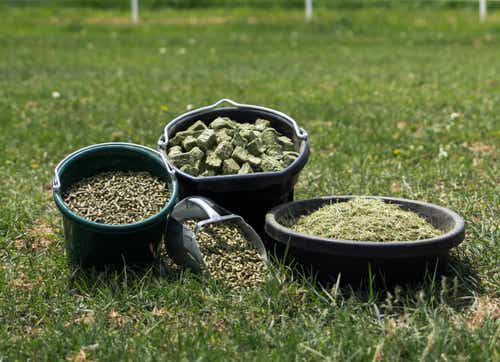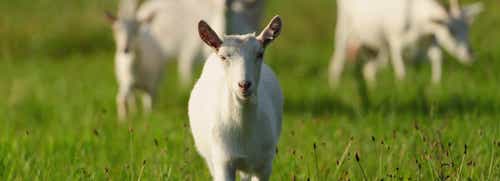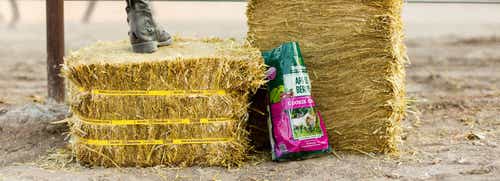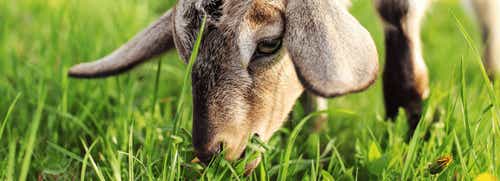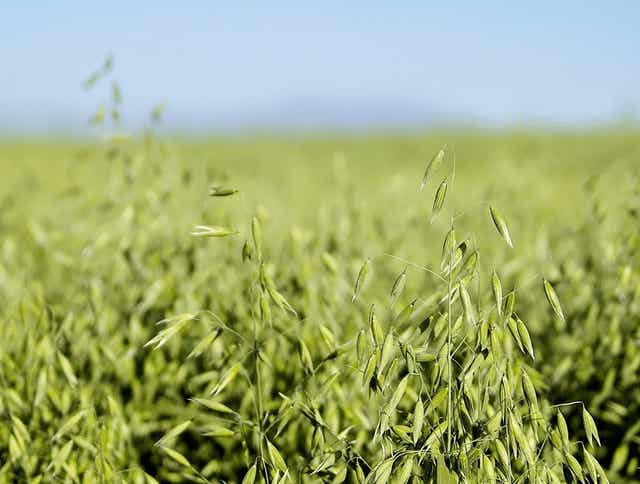
What Is Oat Grass Hay and How Can It Benefit Horses?
Oats are a type of cereal crop grown for the seed/grain. Oat grains have been fed to livestock for centuries and have long been a sought-after source of energy for horses. Oats are high in starch and fiber, and while most horses consume and digest them easily, many horses don’t due to their high starch content. Oat plants grown as a cereal crop produce a seed/grain as they mature and energy stores (starch) from the plant are shifted to the grain as it ripens. This is then harvested, and the remaining plant is oat straw, which has very little nutritional value and is high in non-digestible fiber (Cuddeford et al., 1995).
While oat grains can be detrimental to some horses, oat grass hay is an entirely different story. Oat grass hay is specifically grown as a forage crop similar to timothy or orchard grass and is harvested in an immature growth stage to maximize digestibility. As the seed head has not developed, the starch content of oat grass forage is minimal. When oat grass hay is correctly managed using optimal fertilization programs, we can increase fiber digestion and growth of the plant while minimizing water soluble carbohydrates (Malik et al., 2011).
When compared to alfalfa cut at the same level of maturity, oat grass hay is lower in crude protein and lower in digestible energy. To improve the protein quality often, oat grass hay is grown with legumes such as alfalfa. This serves to increase essential amino acids such as lysine while further decreasing the non-structural carbohydrate content of the final product (Bagg et al., 2013).
Standlee Premium Western Forage offers Premium Alfalfa/Oat Grass Forage Cubes in a convenient 40lb bag. These are formed by coarsely grinding Standlee Premium Alfalfa, Standlee Premium Oat Grass and forcing it through a large die with heat, steam and natural bentonite. The blend of both forages provides highly digestible fiber, with moderate protein and low non-structural carbohydrates.
This product is ideal for growing (moderate to rapid growth) and underweight horses, horses with sensitivity to carbohydrates, horses with gastric ulcers, performance horses, late in pregnancy and lactating mares, breeding stallions and senior horses.
In summary, it is important to remember that oat grass grown as a forage crop and oats grown as a cereal grain crop have different management and completely different nutritional outcomes, with regards to feeding horses. Visit our Standlee Forage Finder® to find the right type of forage to feed your horse, depending on their age, activity level and if they have any special needs, such as being overweight, carbohydrate sensitive, etc. Use the Standlee Feed Calculator® to assist in balancing your horse’s feed program, depending on how much current hay, grain, beet pulp or oil is being fed, to ensure they are receiving an adequate level of calories and fiber in their diet.
Standlee recommends consulting with your veterinarian or a nutritionist when changing your animal’s feeding program. Please call our Standlee Customer Service team at 1-800-398-0819 or email customerservice@standlee.com, with any additional feeding questions.
Scientific References:
- Cuddeford, D., 1995. Oats for animal feed. In: Welch, R. W. (Ed.). The oat crop: production and utilization. Chapman & Hall.
- Malik, R.; Paynter, B.; Webster, C.; McLarty, A., 2011. Growing oats in Western Australia for hay and grain. Dept. Agric. Food. Government of Western Australia, Bull. N° 4798
- Bagg, J.; Johnston, P., 2013. Summer seeding oats for forage. Field Crop News




